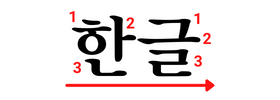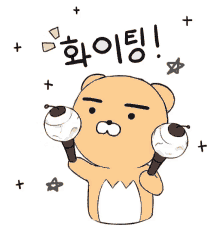Want to learn how to sing along to your favorite K-pop song?

Then, you better learn how to read Hangeul first!
한글 (Hangeul) is the official writing system for the Korean language. It was created by King Sejong the Great in the 15th Century but it's still used today in modern Korean.
You'll need to know some basics to start on your Hangeul journey!
Getting Started
Learning a whole new alphabet is hard, especially if you’re not familiar with the letters. So, being able to associate these new letters with symbols and sounds you're already familiar with can help a lot.
This video helps you familiarize yourself with and memorize the basics of the Korean alphabet in less than 5 minutes!
Basic Consonants
The basic consonants include: ㄱ ㄴ ㄷ ㄹ ㅁ ㅂ ㅅ ㅇ ㅈ ㅊ ㅋ ㅌ ㅍ ㅎ.
The plain letters ㄱ, ㄷ, ㅂ, ㅅ, ㅈ are pronounced without any aspiration or expulsion of air.
On the other hand, the aspirated letters ㅋ, ㅌ, ㅍ, ㅊ require you to force out air when spoken. When pronounced correctly, you should notice more air coming out of your mouth.

For example, ㄱ, when aspirated, would become “K” or ㅋ.
You will also be able to observe a similarity between the plain and aspirated letters as shown below.
ㅂ /B/ from "bat" — ㅍ /P/ from "pat"
ㄷ /D/ from "dim" — ㅌ /T/ from "Tim"
ㄱ /G/ from "gab" — ㅋ /K/ from "cab"
ㅈ /J/ from "jam" — ㅊ /Ch/ from "chat"
Tense Consonants
Apart from the basics, there are also 5 tense consonants or 쌍 (twin) letters in Korean. This is because they are written by simply doubling certain basic consonants. As such, they are pronounced with a stronger and harder tone. When pronounced correctly, you shouldn't notice air coming out.

ㄲ, the counterpart of ㄱ would be “GG,” which would actually sound like “KK.” Think of how you pronounce "America."
ㄸ, the counterpart of ㄷ would sound like “TT” from the popular song, "Señorita."
ㅃ, the counterpart of ㅂ would sound like “PP” from the word, "apple."
ㅆ, the counterpart of ㅅ would sound like “SS” from the word, "sea."
ㅉ, the counterpart of ㅈ would sound like “JJ" (there's no equivalent in English unfortunately!)
Double Final Consonants
By grouping some of the basic consonants, 11 consonant clusters can be formed. However, only one letter is pronounced as the final letter in each syllable block. They are: ㄳ, ㄵ, ㄶ, ㄺ, ㄻ, ㄼ, ㄽ, ㄾ, ㄿ, ㅀ, and ㅄ.
This video gives an easy tip to see how they can be pronounced and applied.
Basic Vowels

The basic vowels include ㅏ ㅑ ㅓ ㅕ ㅗ ㅛ ㅜ ㅠ ㅡ ㅣ.
Using a simple trick , we can easily memorize how to read and pronounceㅏ, ㅓ, ㅗ, and ㅜ:
ㅏ would sound like "ah" from "iPad"
ㅓ would sound like "aw" or "uh" from "iPod"
ㅗ would sound like "o" from "old"
ㅜ would sound like "oo" from "new"
Once you master the four vowels above, learningㅑ,ㅕ, ㅛ, and ㅠ becomes very easy. You simply have to attach a line and add a “Y” sound in front:
ㅑ would be pronounced as “yah”
ㅕ as “yuh”
ㅛ as “yoh”
ㅠ as “yoo”
Lastly, the pronunciation of ㅡ can be found in the word “brook” whileㅣcan be found in “tree.”
Complex Vowels
Similar to the consonants, certain vowels can be combined to create 11 complex vowels. They areㅐ,ㅒ, ㅔ, ㅖ, ㅘ, ㅙ, ㅚ, ㅝ, ㅞ, ㅟ, ㅢ.
Learn more about them in this video.
Order Of Reading
Hangeul is written in syllabic blocks. So, instead of “ㅇㅏㄴㄴㅕㅇ,” which would be the format more familiar to English speakers, it is written as “안녕.”
Each of these blocks is considered as one syllable. They begin with a consonant, then a vowel, and sometimes, another final consonant letter or 받침.
As such, one syllable is read at a time. Within a syllable, each of the letters is read following the left to right, top to bottom rule.

Quiz
How would you read the word "김치"?
Take Action

Begin your Hangeul journey!
Your feedback matters to us.
This Byte helped me better understand the topic.
